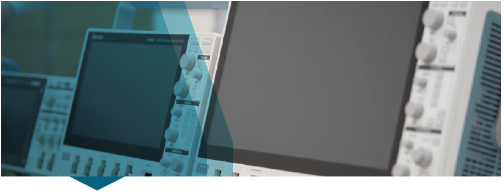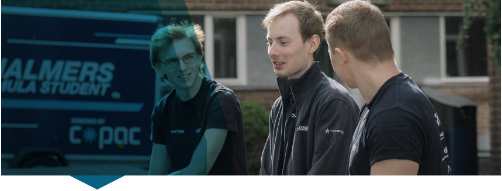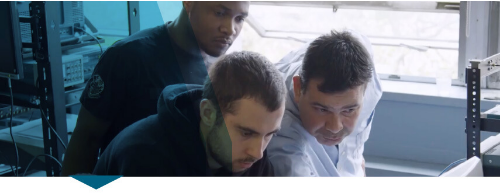
Watch how educators at Temple University collaborate with Tektronix to redefine their laboratory space and equip students with the necessary technologies, enabling them to have experience and advantages when entering the labor market.
The engineering program at Temple University is developing rapidly. Students need to complete many hands - on practical assignments, but they cannot obtain all the required tools and equipment. Temple University has decided to upgrade its engineering laboratory and invest in a large - scale open engineering space. In this space, students from various disciplines can work on their projects. However, they need help to equip the space with the latest testing instruments and technologies.
The university's educators collaborated with our distribution partners and account managers to determine the test and measurement equipment most helpful for their students. After striving to understand the university's primary mission, the team assembled an efficient and cost - effective solution combination including hardware, software, and services for complete workbenches. Our goal is to provide students with the tools and experience needed for projects, making them more advantageous than other engineering graduates entering the labor market. From mixed - domain and mixed - signal oscilloscopes to arbitrary function generators and digital multimeters, engineering students at Temple University can now access a diverse combination of cutting - edge technology products in both the engineering laboratory and the makerspace.

During the design and manufacturing of an all - electric drive race car, the Chalmers Formula Student team in Sweden used multiple Tektronix products to accurately and efficiently test and measure the design of their race car's motor and battery.
Chalmers Formula Student collaborates with Tektronix. Tektronix provides it with Series 5 mixed - signal oscilloscopes, as well as power supplies, source measurement units, and probes. Thus, they have everything needed to accurately and efficiently test and measure the design of the race car's motor and battery.
The user - friendly interface and touch - screen design of the Series 5 MSO significantly flatten the students' learning curve, enabling them to spend less time learning about the equipment and more time on design innovation.
With easy - to - use cutting - edge test and measurement equipment, the complex and arduous tasks in the project become simpler and more manageable.
Chalmers Formula Student is a team of 33 Swedish engineering students who design and build an all - electric, all - wheel - drive race car to compete fiercely against other engineering students.
The car is equipped with four different motors and a 600 V battery. This is a complex project, and they cannot obtain all the required test and measurement equipment. As students, they have limited experience and are still learning some basic skills in electronic testing and system design.

Professor Enrique Haro of the Electronic Engineering Program at Queensborough Community College collaborates with Tektronix to provide students with cutting - edge workbench solutions and hands - on experience for any
As an adjunct professor teaching electronic engineering at QueensBOROUGH COMMUNITY COLLEGE, Enrique Haro was concerned that his students' education would be hindered by insufficient equipment.
He firmly believed that hands - on practice and manipulation far outweigh theoretical knowledge on paper. For example, to enable students to gain experience in building hardware solutions, they need test equipment to verify and troubleshoot design flaws.
Enrique also communicated with some potential employers to understand the skills and experience they expected graduates to possess. Their feedback further deepened his perception of the situation.
Practical experience was crucial to his own engineering journey, and he hoped his students would have the same opportunity. He was particularly interested in teaching students(RF)analysis, a field with high market demand in engineering but relatively few related courses offered in colleges.
Haro and QCC collaborated with Tektronix to determine the most beneficial equipment for their students. Our team worked closely with QCC to provide customers with efficient and cost - effective cutting - edge RF workbench solutions. Our goal was to equip students with the tools and experience needed for RF projects, giving them an edge over other engineering graduates entering the labor market.
After selecting and delivering the new RF workbench, Tektronix visited the school to conduct two separate training sessions for students and faculty, ensuring that everyone involved could comfortably use the equipment and meet project requirements.
With the new spectrum analyzers, vector signal generators, and vector network analyzers, students at Queensborough Community College now have access to the cutting - edge RF workbench needed for success.

To increase students' interest in RF engineering work and enhance their understanding of electromagnetic (EM) principles, Assistant Professor Jay McDaniel and the University of Oklahoma collaborated with Tektronix to develop a ten - workstation laboratory, providing experiential learning opportunities.
To get more students interested in engineering work in the RF field and help them better understand the principles of electromagnetics, Assistant Professor Jay McDaniel collaborated with Tektronix to design a 10 - workstation laboratory, providing experiential learning opportunities for the electromagnetics courses at the University of Oklahoma.
Cost - effective Tektronix USB instruments (such as the TTR500 Series Vector Network Analyzers and RSA306B Series Spectrum Analyzers) help the University of Oklahoma spend money where it matters most. This will attract more students to participate in projects and better prepare them for work after graduation.
McDaniel also pointed out that the diversity of Tektronix product lines makes it easy to meet multiple needs, and full - range procurement is a no - brainer. Assembling a workbench with 10 different instruments from 10 different companies will make students spend more time on collaborative work rather than learning how to design.
The University of Oklahoma (OU) faces a persistent challenge: recruiting and training a large number of students through its Advanced Radar Research Center and the School of Electrical and Computer Engineering to meet the industry's demand for qualified Radio Frequency (RF) engineers. This is partly due to the pre - existing connection between the "screening" courses and math - intensive courses such as Electromagnetics (EM). Many universities across the country, including the University of Oklahoma, have recognized the necessity of implementing modern teaching methods and practical experience in electromagnetics courses—providing other resources in addition to pure math lectures.

The Reliable Aircraft electrical Insulation System sElection project (RAISE) supports the innovation of the electrical insulation of motor windings. Learn how the RAISE team relies on Tektronix to better understand the impact of fast - switching transients on insulation degradation.
Tektronix recommended that RAISE match our IsoVu probes with our Series 5 mixed - signal oscilloscopes. This enables Professor Franceschini to use the spectrum view for high - precision frequency domain evaluation while monitoring specific switching behaviors.
This allows for a better understanding of the impact of fast switching transients on the insulation degradation mechanism. It also makes it easier to evaluate whether the latest insulation materials in machines and power electronic components are suitable for future applications with higher power supply voltages and higher switching gradients generated by wide - band gap devices.
The Reliable Aircraft electrical Insulation System sElection project (also known as RAISE) is a 30 - month effort aimed at supporting the innovation of the electrical insulation of motor windings. Professor Giovanni Franceschini, a member of the Melting Lab at the University of Modena and Reggio Emilia (UniMoRe), is part of the engineering consortium leading this project.
The harsh environment and the demand for ever - increasing power density pose growing challenges to the integrity of insulation systems in aircraft design for engineers like Professor Franceschini.
As new aircraft designs adopt wide - band gap devices, RAISE has begun to focus its research on the impact of the ever - increasing switching speeds on the partial discharge and breakdown behavior of typical components. They soon found that their test equipment was simply unable to perform the required measurements.